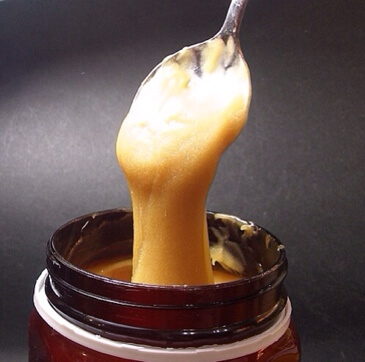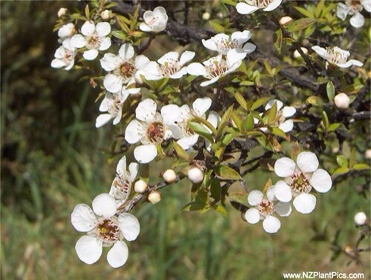
It seem like everywhere you turn, there is some product touting the miraculous benefits of Manuka honey. So what is the hype about this dense, dark honey from New Zealand? When my stepfather was treated with medical grade honey for a slow to heal leg ulcer, naturally I was not only concerned but intrigued by his treatment. He suffers from Type 2 diabetes and from time to time deals with this very painful condition. Medical grade honey is a specially sterilized Manuka honey used in wound care because of its naturally high antibiotic properties. Manuka honey is exported primairly from New Zealand(exports 1700 tons yearly)and obtained from bees feasting off the pollen of the Manuka flower.

I myself use a number of skin care products containing manuka honey. I appreciate the natural softening effect of the lines and wrinkles so prevalent in middle age. But as a beekeeper and firm believer in local sourced honey, I decided to do a bit of digging to find out what is so special about Manuka honey.
One of the first you will notice about Manuka honey is it’s viscousity and its strong, dark flavor. For consumption, I myself prefer a lighter honey but there are many who enjoy the intense flavor of Manuka. In order to be labled Manuka, the honey must contain 70% pollen from the evergreen flowering shrub known as the Manuka, jellybush or broomtree. The tree is indigenous to New Zealand and is often confused with the melaluca or teatree from which we obtain tea tree oil. The shrubby tree blooms for about two weeks and the honey culled from the hives is highly prized for its medicinal properties.
Lets be clear, all honey contains some antibacterial components as hydrogen peroxide is formed when glucose breaks down to produce honey. Honey has been used for thousands of years to treat a variety of medical ailments. But the main component, Methlglyoxal(MG) found in varying amounts in most honey is highest in the honey from the manuka flower. MG has major antibiotic properties and protects against damage caused by bacteria. Of course, the higher the MG concentration, the stonger the antibiotic effect and the cost of the product rises incrementally.
New Zealand honey producers have established a Unique Manuka Factor(UMF) system to rank the MG levels in honey and maintain strict control over licensure for exportation. Remember in order to be labled Manuka, the honey must contain 70 % manuka pollen and a minimum rating of 10 to be marketed as manuka or active manuka. A UMF of 12-15 is active against various forms of resistant bacteria.
Although the main medical use is wound care, manuka honey is proported to treat a variety of other conditions.
- Prevent and treatment of cancer
- Lowers your cholesterol
- Lowers inflamation
- Lowers blood sugar in diabetics
- Treatment of GI issues
- Helpful in acne treatment
So if you are looking for a natural alternative to wound care and a marvelous skin restorative, look no furthur than manuka.
Spoiler Alert!!
Stay tuned to The Bee Queen for an exciting product line formulated with high grade manuka honey coming soon!.



